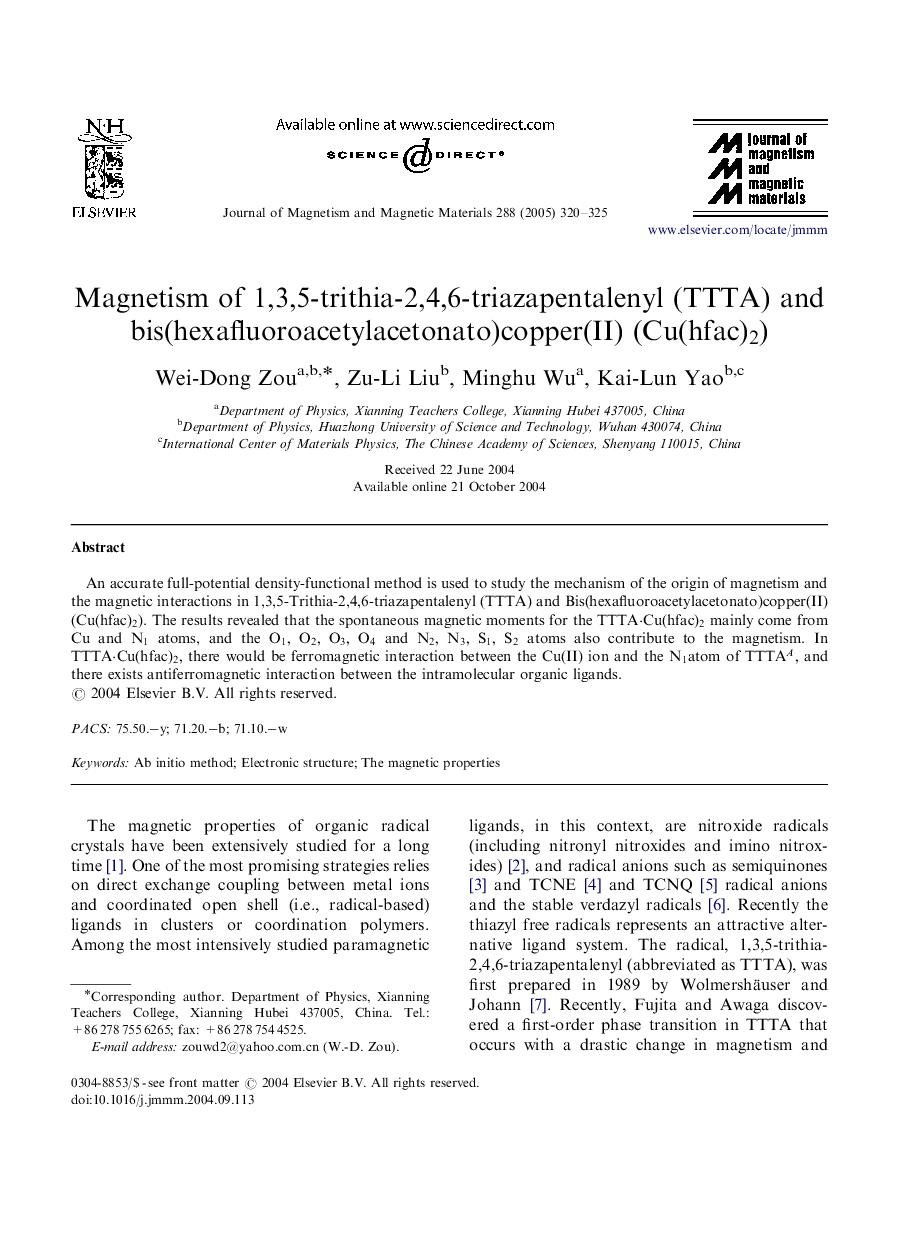| Article ID | Journal | Published Year | Pages | File Type |
|---|---|---|---|---|
| 9834467 | Journal of Magnetism and Magnetic Materials | 2005 | 6 Pages |
Abstract
An accurate full-potential density-functional method is used to study the mechanism of the origin of magnetism and the magnetic interactions in 1,3,5-Trithia-2,4,6-triazapentalenyl (TTTA) and Bis(hexafluoroacetylacetonato)copper(II) (Cu(hfac)2). The results revealed that the spontaneous magnetic moments for the TTTA·Cu(hfac)2 mainly come from Cu and N1 atoms, and the O1, O2, O3, O4 and N2, N3, S1, S2 atoms also contribute to the magnetism. In TTTA·Cu(hfac)2, there would be ferromagnetic interaction between the Cu(II) ion and the N1atom of TTTAA, and there exists antiferromagnetic interaction between the intramolecular organic ligands.
Related Topics
Physical Sciences and Engineering
Physics and Astronomy
Condensed Matter Physics
Authors
Wei-Dong Zou, Zu-Li Liu, Minghu Wu, Kai-Lun Yao,
